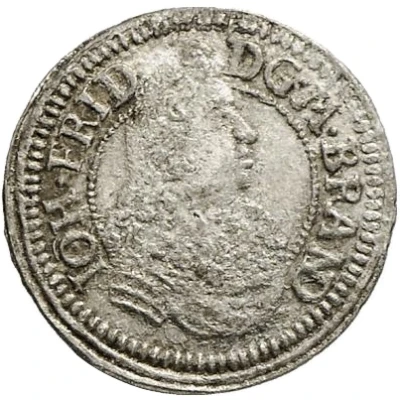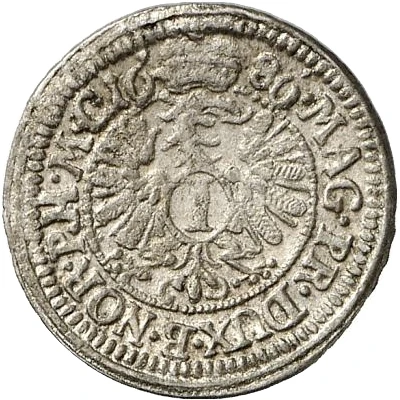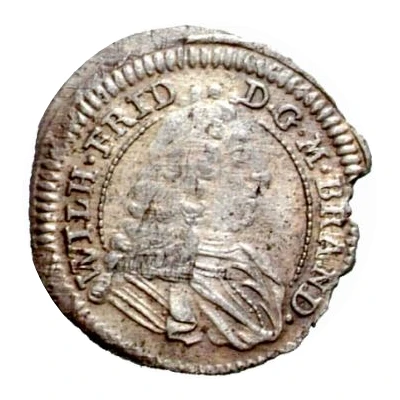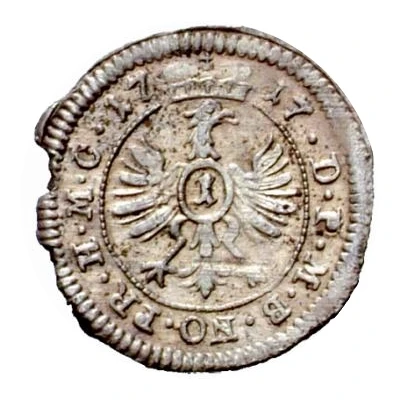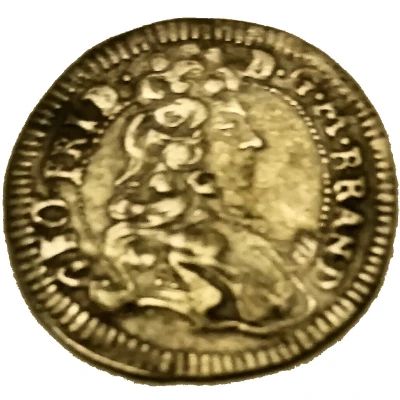
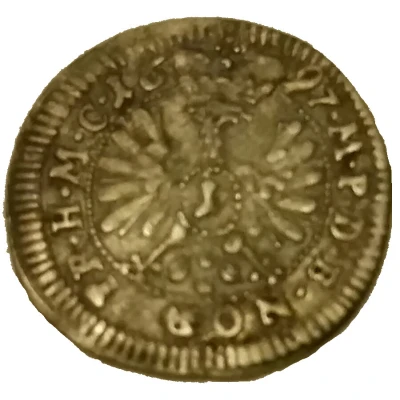

1 Kreuzer - George Frederick II
| Silver | - | 16 mm |
| Issuer | Margraviate of Brandenburg-Ansbach (German States) |
|---|---|
| Margrave | George Frederick II (Georg Friedrich II) (1692-1703) |
| Type | Standard circulation coin |
| Years | 1693-1702 |
| Value | 1 Kreuzer (1⁄72) |
| Currency | Thaler |
| Composition | Silver |
| Diameter | 16 mm |
| Shape | Round |
| Orientation | Medal alignment ↑↑ |
| Demonetized | Yes |
| Updated | 2024-10-05 |
| Numista | N#85144 |
|---|---|
| Rarity index | 87% |
Reverse
Crowned eagle with I on breast, date divided above.
Script: Latin
Lettering: M P D B NOR PR H M C
Comment
The Principality of Ansbach (German: Fürstentum Ansbach) or Markgraftum Brandenburg-Ansbach was a reichsfrei principality in the Holy Roman Empire centered on the Bavarian city of Ansbach. The ruling Hohenzollern princes of the land were known as margraves, as the principality was a margraviate (but not a march). https://en.wikipedia.org/wiki/Principality_of_AnsbachGeorge Frederick II, Margrave of Brandenburg-Ansbach (3 May 1678 – 29 March 1703), known as George Frederick the Younger, the third son of John Frederick, Margrave of Brandenburg-Ansbach by his first wife the Margravine Joanna Elisabeth of Baden-Durlach (and thus a half-brother of Queen Caroline of Great Britain), succeeded his elder brother as Margrave of Ansbach in 1692.
In the War of the Palatinian Succession he fought from 1695 to 1697 as a volunteer in the Imperial Army. During the Spanish War of Succession in 1702 he succeeded in taking the fortress Bersello Modena. He was killed at the Battle of Kittensee in 1703, and as he was unmarried, Ansbach passed to his younger half-brother William Frederick.
https://en.wikipedia.org/wiki/George_Frederick_II,_Margrave_of_Brandenburg-Ansbach
Interesting fact
The 1 Kreuzer coin from the Margraviate of Brandenburg-Ansbach, which was minted during the reign of George Frederick II (1693-1702), was made of silver, but it was also one of the first coins to use a copper-nickel alloy in its production. This was a significant innovation in coinage technology at the time, as it allowed for the creation of coins that were more durable and resistant to wear and tear than those made of pure silver. This innovation helped to pave the way for the widespread use of copper-nickel alloys in coinage production in the centuries that followed.
